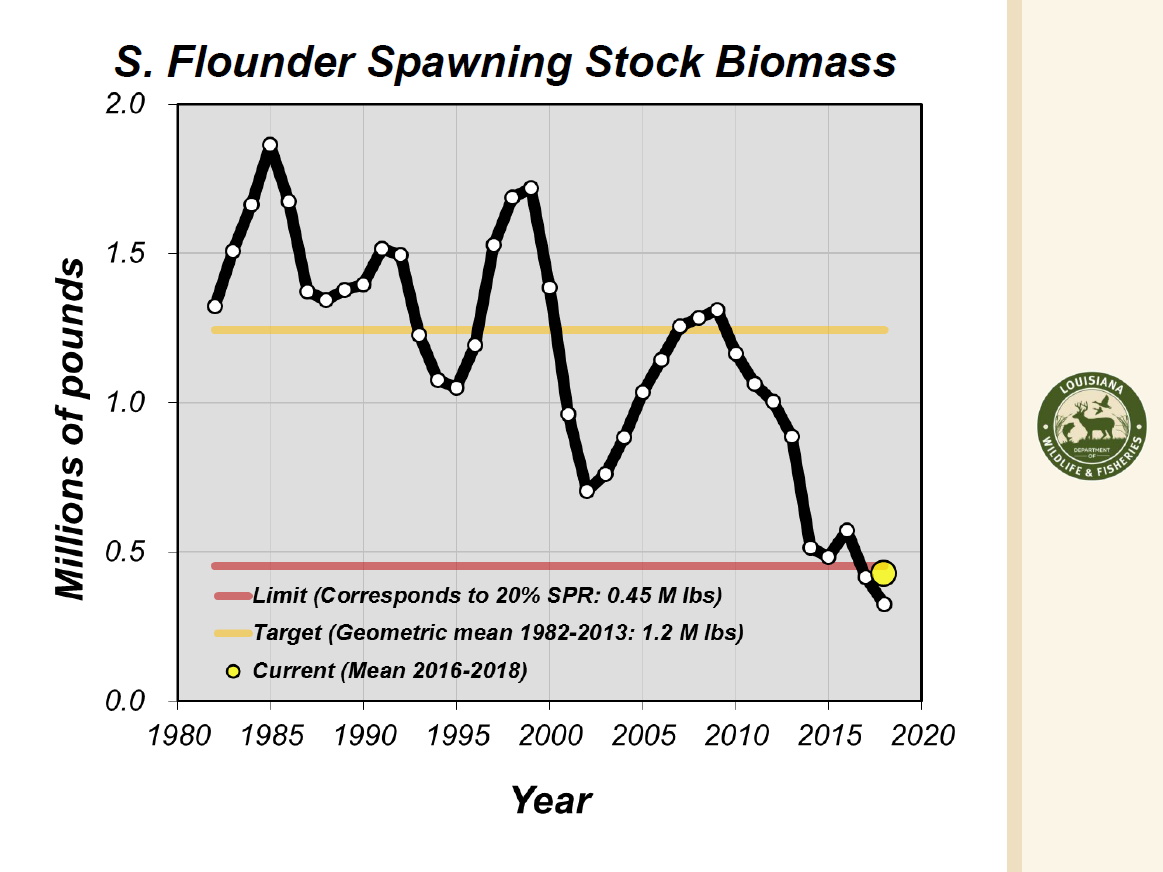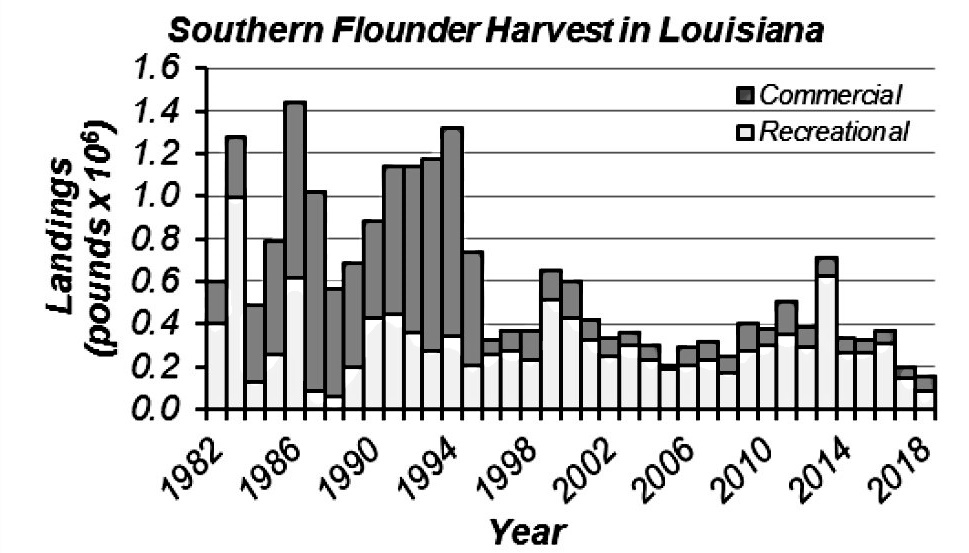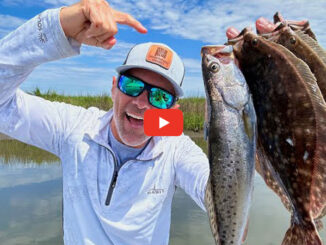
Cause does not appear to be overfishing – but may be environmental
During their Thursday, Feb. 6, meeting, members of the wildlife and fisheries commission heard some disheartening news regarding southern flounder stocks in Louisiana coastal waters.
“We have seen a dramatic drop in flounder stock biomass in recent years, and it has continued to decline,” said Jason Adriance, LDWF inland fisheries biologist manager.
Flounder spawning stock biomass

Flounder stock biomass refers to the total weight of adult female flounder that can reproduce.
For this species, stock biomass estimates come from fishery-independent sampling in all coastal basins by use of the LDWF inshore trawl survey and trammel net survey.
The current statewide flounder stock biomass is estimated at just below half a million pounds, the lowest on record since the early 1980s. Just 10 years ago by comparison — flounder stock biomass was approximately 1.7 million pounds.
According to a draft copy of Assessment of Southern Flounder Paralicthys lethostigma in Louisiana Waters 2020 Report — the 2017 and 2018 recreational and commercial harvests of southern flounder were also the lowest on record.
According to Adriance, the flounder stock is not undergoing overfishing.
“Fishing mortality rate is still within the limits between the target and the limit,” he said. “It varied high recently, there’s been some more variation than normal in recent years.
“However, it’s still in that zone where it’s under the limit but above the target,” the biologist said.
“But it is overfished.”
In other words, although fishing mortality rates are currently not high for flounder, there are too few individuals in the stock above the minimum level established for this species.
Why flounder are decreasing
If not currently undergoing overfishing, what could this decrease in flounder populations be due to?
“That we just can’t put our fingers on,” Adriance said. “And it’s happening gulf-wide.
“All the states are trying to figure out all the ways to deal with this one,” he said.
According to the biologist, there’s a couple of hypotheses gulf states are considering regarding this decline.
“One (hypothesis) is temperature plays a big role in sex determination when those flounder recruit into the estuary,” he said. “The higher the water temperatures, the more male flounder end up being in the population.
“There’s also some work being done on survival of those (flounder) larvae when they come in. Those higher water temperatures may decrease survival as well.”
Future steps

“We will have to come back to this commission at some point with some management recommendations,” Adriance said. “Or with ways to try to recover that stock.”
Adriance ended his presentation by including a quote from Louisiana RS 56:325.4(D)2.
“If data indicate that a fishery is not meeting or is likely not to meet the established targets, the department shall provide for the commission’s consideration management options to ensure that the species can meet the management targets established for that species.”
Not a fishing issue
Wildlife and fisheries commissioner Chad Courville of Lafayette made the following comment following Adriance’s presentation.
“If you recall that fishing mortality graphic, this is not one where fishing is an issue,” he said. “There is something going on environmental.”
Current recreational and commercial limits

Currently there are both recreational and commercial limits for southern flounder in Louisiana waters.
The recreational bag limit is 10 per person per day with no size limits. Fishing for flounder is allowed year-round in Louisiana waters. Possession limits for flounder are the same as the daily bag limit.
The commercial limit for flounder is 10 daily with no size limit per licensed commercial fisherman. However commercial shrimping vessels may retain and sell all flounder harvested as bycatch on a shrimping trip. Commercial fishing for flounder is also allowed year-round.
Adriance did not present any types of proposed creel, limit or seasonal changes to the commissioners during Thursday’s meeting. Management recommendations by biologist will be delivered to commissioners in the future.
